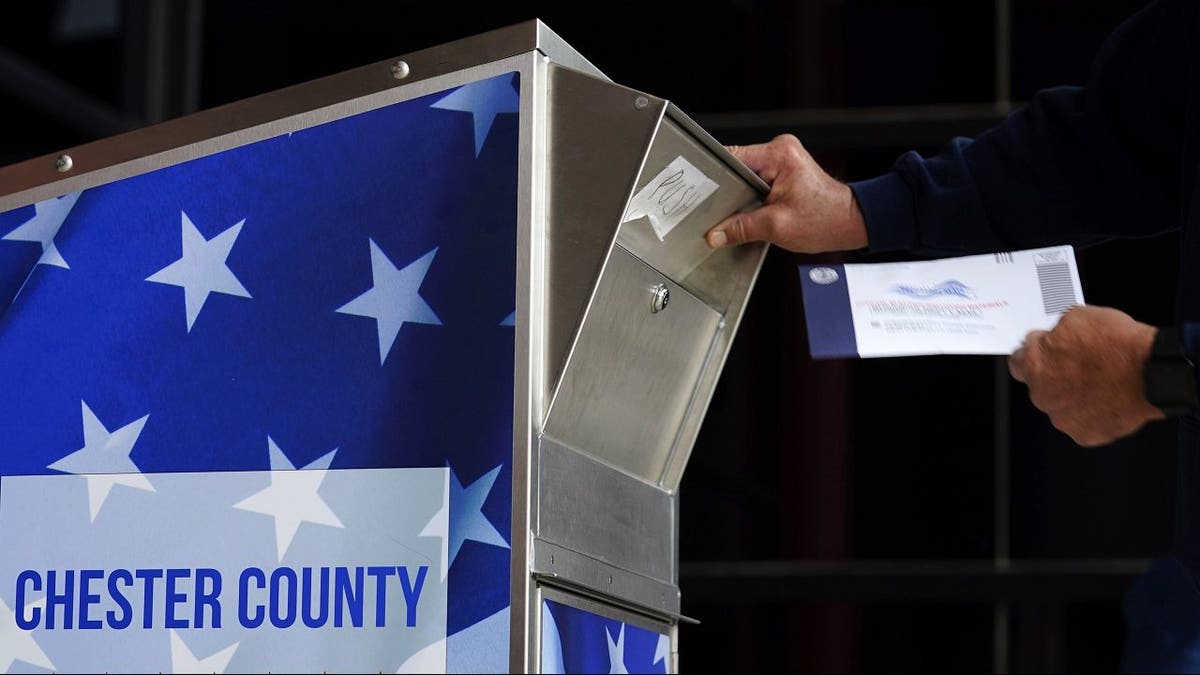The tension is high Nov. 3--a potentially too close-to-call presidential election, long-running concerns over mail-in votes amid the coronavirus pandemic, and ongoing woes that tightly held swing states could tip the Trump vs. Biden outcome.
Cue a risk-limiting audit (RLA), which is being mandated in only a handful of states and has never before been used to recount ballots in a U.S. presidential election.
An RLA is widely viewed by experts and analysts as a potential safeguard to avoid onerous time- and resource-draining--as well as highly costly--singular vote recounts.
"If done right, these are accurate statistical tests," Matthew Schmidt, national security and political science coordinator at the University of New Haven, told Fox News. "But of course, a 100% recount is always more accurate. It's just like COVID testing. If you can't test the whole population, you use a statistical sampling technique to estimate the number of positives in a population, or in our case, the number of errant tallies in a population of votes."

A voter fills out a ballot at the Owyhee County Community Center in Homedale, Idaho, on Election Day Nov. 3. (AP Photo/Otto Kitsinger)
As it stands, 34 states and the District of Columbia mandate a traditional post-election audit, but in recent years, statisticians have developed an RLA – an audit protocol – to assure that election outcomes are correct. The greater the margin of difference between the candidates, the smaller the number of ballots that need to be counted. The tighter the race, the larger the sample size needs to be.
ELECTION DAY ANTI-VOTING MESSAGE SPRAY-PAINTED ON KANSAS CITY'S WORLD WAR I MUSEUM
"A risk-limiting audit is a pretty straightforward concept and uses a sample rather than looking at the total number of ballots. We use sampling all the time, whether it is to check our water supply, for technical audits, or for quality control," said Alex Hamerstone, of cyber-security firm TrustedSec. "Most control audits are done this way. They don't have some taste test for every gallon of ice cream sold, but they sample some from every batch."
He underscored that for any technical or automated process, it makes sense to have a human check some random sample. The human can validate that the results are as expected.
"It can be applied to the election by using it to take a sample of ballots and have a human compare what is on it to what a computer/automated scanner recorded. It could give additional assurance that the ballots are being counted accurately," Hamerstone continued. "It takes less time and expense. It clearly takes less time to manually check 10% of something or 50% of something than to check 100% of them."

Oct. 23, 2020: A man drops off his ballot for the 2020 general election in the United States outside the Chester County Government Services Center in West Chester, Pa. Pennsylvania, where the candidates Vice President Joe Biden and President Donald Trump appeared to be divided by a razor-thin margin for the state’s 20 electoral votes, seemed likely to be the epicenter of any potential post-election litigation. (AP Photo/Matt Slocum)
Proponents of an RLA also point out that it can be done with a bipartisan audience, thus advocating transparency in the civic process, and ensuring machines and computers tabulating the votes have done so accurately.
An RLA was first introduced in Colorado in 2017. For Election Day 2020, the state added a grace period to fix any ballot-related problems, as well as calculate military and other absentee ballots from abroad. Colorado's Secretary of State's Office will then conduct an RLA, beginning with a public rolling of the dice to determine a 20-digit number used to sporadically select ballots for additional verification.

Election workers sort ballots Oct. 21, at the Maricopa County Recorder's Office in Phoenix. Despite massive turnout for early voting, elections in Arizona are going pretty smoothly. By the following Tuesday, Maricopa County had processed more than 1.2 million ballots, surpassing the total number of early ballots cast in 2016. (AP Photo/Matt York)
Three years on, and several more states – Nevada, Rhode Island, Michigan and Virginia – have followed Colorado's lead with a requirement for a risk-limiting audit. Georgia and Indiana have RLA pilot programs in place, while California, Ohio, Oregon and Washington give counties the option of an audit, with one option being the fast-emerging RLA.
California recommends an RLA, but state laws do not mandate it.
Appraisals conducted by other states typically entail the use of software programming, which critics say propels the procedure out of public view.
2020 PRESIDENTIAL ELECTION BALLOTS CAST SO FAR
According to Schmidt, the advantage of an audit is that it can limit the risk of failing to detect a statistically significant number of errant vote tallies.
"These techniques can also be faster than total recounts. But they can never be as accurate as a 100% recount or testing 100% of a population," he said.
And while only a small slice of the U.S. will be using the RLA in 2020, some see it as an emerging mechanism to reform and streamline voter accuracy. Backers of the RLA view it as a reliable means for detecting software glitches, bugs, and scanning and sensor problems in voting machines.
CLAWING BACK VOTES: 7 STATES ALLOW VOTERS TO RESUBMIT BALLOTS
Nonetheless, the risk-limiting audit is not without cons.
"I don't believe risk limitation audits in real-time have that much utility for U.S. elections. They are primarily a tool for testing whether a system is functioning properly," contended Dennis Santiago, a California-based global risk and financial analyst. "For instance, is something wrong with the vote reading machines that could cause errors in counting, putting the reliability of the actual counting process in doubt? It's more the kind of thing election officials should be doing as part of the acceptance testing of voting technology well before Election Day."

Voters fill out their ballots inside a polling place at Indian Creek Fire Station #4 in Miami Beach, Fla., on Election Day, Nov. 3.(AP Photo/Rebecca Blackwell)
In his view, it is not a question of it being accurate; it's a question of it being sufficient.
Thus, if a particular race is so tight that a recount is required, sampling systems like audits will not suffice.
"When it comes down to a few votes determining who gets to occupy a government office, only a census, a count of every properly cast ballot that can be located, will do," Santiago continued. "The competing candidates would be right to insist on full and accurate recounts of all the votes cast until the outcome is certain. If that requires multiple recounts, so be it. That's why we put such provisions into our election laws."
CLICK HERE TO SEE FOX NEWS’ LIVE PROBABILITY DIALS
But even skeptics perceive an RLA as having a place in electoral proceedings.
"I mostly see methods like these used as part of improving industrial efficiency. For instance, ensuring all the machines, robots and scanners in a production line are in good order every day that factory is running," Santiago added. "It's also useful for testing and tuning the line before certifying it to start production. But it's not really that useful for a one-time event like an election. For that, a recount works just as well."






